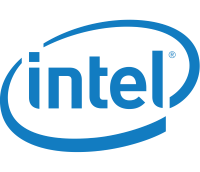
We could not find any results for:
Make sure your spelling is correct or try broadening your search.

Intel is the world's largest logic chipmaker. It designs and manufactures microprocessors for the global personal computer and data center markets. Intel pioneered the x86 architecture for microprocessors. It was the prime proponent of Moore's law for advances in semiconductor manufacturing, though ... Intel is the world's largest logic chipmaker. It designs and manufactures microprocessors for the global personal computer and data center markets. Intel pioneered the x86 architecture for microprocessors. It was the prime proponent of Moore's law for advances in semiconductor manufacturing, though the firm has recently faced manufacturing delays. While Intel's server processor business has benefited from the shift to the cloud, the firm has also been expanding into new adjacencies as the personal computer market has stagnated. These include areas such as the Internet of Things, artificial intelligence, and automotive. Intel has been active on the merger and acquisitions front, acquiring Altera, Mobileye, and Habana Labs in order to bolster these efforts in non-PC arenas. Show more
| Period | Change | Change % | Open | High | Low | Avg. Daily Vol | VWAP | |
|---|---|---|---|---|---|---|---|---|
| 1 | -1.73 | -8.40213695969 | 20.59 | 21.05 | 18.56 | 85068961 | 19.59385633 | CS |
| 4 | -5.855 | -23.6900667611 | 24.715 | 24.99 | 17.665 | 106416634 | 20.91829249 | CS |
| 12 | -1.95 | -9.37049495435 | 20.81 | 27.55 | 17.665 | 113854256 | 22.2598706 | CS |
| 26 | -3.75 | -16.5855816011 | 22.61 | 27.55 | 17.665 | 91112664 | 22.18532016 | CS |
| 52 | -15.6 | -45.2698781196 | 34.46 | 37.16 | 17.665 | 78463692 | 23.67349246 | CS |
| 156 | -29.76 | -61.2093788564 | 48.62 | 51.26 | 17.665 | 53833073 | 29.69608539 | CS |
| 260 | -39.25 | -67.5443125108 | 58.11 | 68.49 | 17.665 | 44607627 | 36.31996688 | CS |
 rosemountbomber
4 days ago
rosemountbomber
4 days ago
 makinezmoney
3 weeks ago
makinezmoney
3 weeks ago
 TechandBio
1 month ago
TechandBio
1 month ago
 BlissBull
1 month ago
BlissBull
1 month ago
 RicheyB
1 month ago
RicheyB
1 month ago
 TechandBio
1 month ago
TechandBio
1 month ago
 tw0122
1 month ago
tw0122
1 month ago
 Koog
1 month ago
Koog
1 month ago
 TechandBio
1 month ago
TechandBio
1 month ago
 koolmc
2 months ago
koolmc
2 months ago
 Koog
2 months ago
Koog
2 months ago
 TechandBio
2 months ago
TechandBio
2 months ago
 koolmc
2 months ago
koolmc
2 months ago
 koolmc
2 months ago
koolmc
2 months ago
 TechandBio
2 months ago
TechandBio
2 months ago
 koolmc
2 months ago
koolmc
2 months ago
 koolmc
2 months ago
koolmc
2 months ago
 hwang_jini
2 months ago
hwang_jini
2 months ago
 ron51ron51
2 months ago
ron51ron51
2 months ago
 koolmc
2 months ago
koolmc
2 months ago
 koolmc
3 months ago
koolmc
3 months ago
 alan81
3 months ago
alan81
3 months ago

It looks like you are not logged in. Click the button below to log in and keep track of your recent history.
Support: +44 (0) 203 8794 460 | support@advfn.com
By accessing the services available at ADVFN you are agreeing to be bound by ADVFN's Terms & Conditions